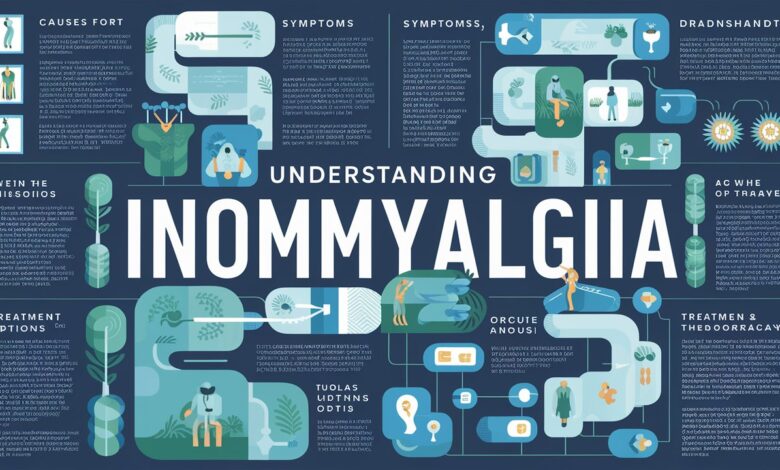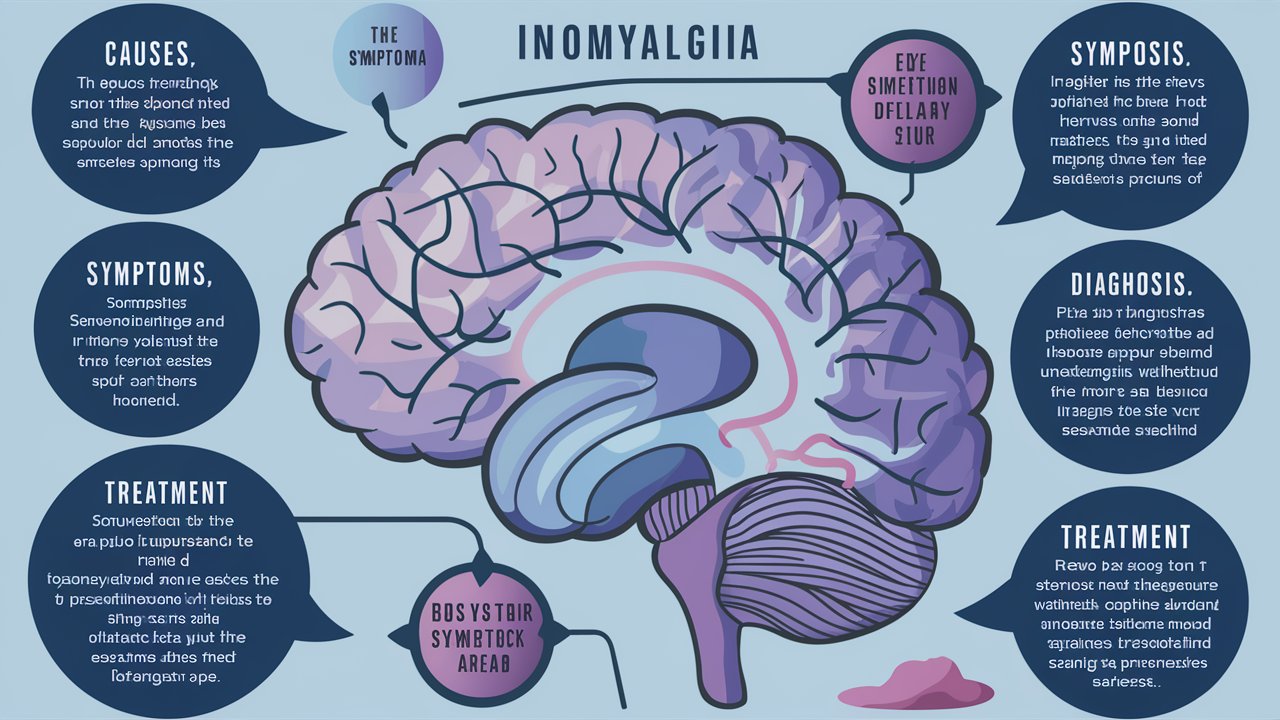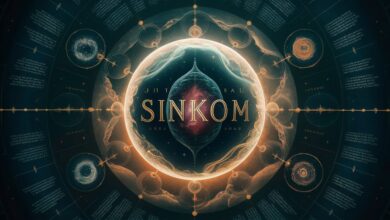Understanding Inomyalgia: Causes, Symptoms, Diagnosis, and Treatment

Inomyalgia is a chronic condition that affects the muscles, connective tissues, and soft tissues of the body, leading to widespread pain, stiffness, and fatigue. Often misunderstood and misdiagnosed, this condition can drastically affect the quality of life for those who experience it. In this article, we explore the key aspects of inomyalgia, including its causes, symptoms, diagnosis, and treatment options, as well as lifestyle changes that can help manage its effects effectively.
What Is Inomyalgia?
Inomyalgia refers to a muscular pain disorder characterized by chronic, widespread pain and tenderness in the body. It is often grouped under the same category as fibromyalgia, though some researchers argue that inomyalgia may have distinct physiological differences. Unlike temporary muscle pain caused by exertion or injury, inomyalgia pain persists for months or even years, and is often accompanied by fatigue, sleep disturbances, and cognitive challenges.
The condition primarily affects muscle fibers and surrounding connective tissues, leading to inflammation and heightened pain sensitivity. It is more common among women between the ages of 30 and 60, but can occur in men and younger individuals as well.
Causes of Inomyalgia
The exact cause of inomyalgia remains unclear, but research suggests that a combination of genetic, neurological, hormonal, and environmental factors plays a significant role. Here are some of the most common contributing factors:
1. Genetic Predisposition
Individuals with a family history of chronic pain disorders are more likely to develop inomyalgia. Specific genetic markers may influence how the brain processes pain signals, making some people more sensitive to pain stimuli.
2. Neurological Imbalance
Abnormalities in neurotransmitter levels, particularly serotonin, dopamine, and norepinephrine, have been linked to inomyalgia. These chemicals regulate mood and pain perception, and any imbalance can heighten sensitivity to pain.
3. Hormonal Changes
Hormonal fluctuations, especially in women during menopause, can trigger or worsen symptoms. Cortisol imbalance (the stress hormone) is also associated with the development of chronic muscle pain conditions.
4. Physical or Emotional Trauma
In many cases, physical injury, surgery, or emotional trauma precedes the onset of inomyalgia. Chronic stress can alter the body’s stress response system, leading to long-term muscle tension and pain.
5. Sleep Disorders and Immune Dysfunction
Lack of restorative sleep disrupts the body’s healing mechanisms and can intensify pain. Additionally, immune system dysfunction may contribute to chronic inflammation in muscle tissues.
Symptoms of Inomyalgia
The symptoms of inomyalgia can vary from person to person but generally include persistent muscle pain and fatigue. Below are the most common and debilitating symptoms:
1. Widespread Muscle Pain
Pain is often described as dull, aching, or throbbing and can be felt in multiple areas such as the neck, shoulders, back, hips, and legs. This pain tends to fluctuate in intensity and may worsen with physical activity or stress.
2. Chronic Fatigue
Many patients experience overwhelming tiredness, even after adequate rest. Fatigue can make daily activities and physical tasks challenging.
3. Stiffness and Tender Points
Muscle stiffness, particularly in the morning, is a hallmark symptom. There may also be tender points—specific areas of the body that are painful when pressed.
4. Cognitive Difficulties (Fibro Fog)
People with inomyalgia often struggle with concentration, memory, and mental clarity, a condition commonly known as “fibro fog.”
5. Sleep Disturbances
Despite feeling exhausted, individuals may have trouble falling or staying asleep, resulting in non-restorative sleep patterns.
6. Mood Disorders
Depression and anxiety frequently accompany inomyalgia due to the chronic nature of pain and its impact on mental health.

Diagnosing Inomyalgia
Diagnosing inomyalgia can be challenging since there are no specific laboratory tests that confirm its presence. The diagnosis is primarily based on clinical evaluation and ruling out other conditions such as arthritis, thyroid disorders, and autoimmune diseases.
Diagnostic Process Includes:
-
Comprehensive Medical History: Reviewing the duration, pattern, and intensity of pain.
-
Physical Examination: Checking for tender points and muscle stiffness.
-
Blood Tests: To rule out conditions like lupus or rheumatoid arthritis.
-
Sleep Evaluation: Identifying sleep disturbances that may contribute to fatigue.
The diagnosis is often confirmed if pain persists for more than three months and affects both sides of the body in both the upper and lower regions.
Treatment Options for Inomyalgia
Although there is currently no cure for inomyalgia, a combination of medical treatments, physical therapy, and lifestyle modifications can significantly reduce symptoms and improve quality of life.
1. Medications
-
Pain Relievers: Nonsteroidal anti-inflammatory drugs (NSAIDs) and acetaminophen help manage mild to moderate pain.
-
Antidepressants: Medications like duloxetine and amitriptyline can help regulate neurotransmitters and relieve pain.
-
Muscle Relaxants: These help reduce muscle tension and improve sleep quality.
-
Anticonvulsants: Drugs such as pregabalin and gabapentin are effective in managing nerve pain.
2. Physical Therapy
A customized exercise and stretching program improves flexibility, reduces stiffness, and strengthens muscles. Gentle activities like yoga, swimming, and Pilates are particularly beneficial.
3. Cognitive Behavioral Therapy (CBT)
CBT helps patients manage stress and emotional triggers, improving overall pain tolerance and quality of life.
4. Lifestyle Modifications
Maintaining a balanced diet, adequate hydration, and regular sleep routine supports long-term symptom management. Avoiding caffeine and processed foods can also help.
5. Alternative Therapies
Acupuncture, massage therapy, aromatherapy, and mindfulness meditation can offer significant relief when used in conjunction with medical treatments.
Living with Inomyalgia: Coping Strategies
Living with inomyalgia requires patience, support, and consistent self-care. Engaging in stress-reducing activities such as deep breathing, spending time outdoors, or joining support groups can make a major difference. Keeping a pain diary helps track triggers and identify effective coping mechanisms.
Conclusion
Inomyalgia is a complex condition that impacts both the body and mind. Understanding its causes, recognizing its symptoms early, and pursuing a comprehensive treatment plan can dramatically improve daily function and comfort. With the right approach, individuals can learn to manage pain, regain energy, and enhance their quality of life.
Frequently Asked Questions (FAQ)
1. Is inomyalgia the same as fibromyalgia?
While both share similar symptoms, inomyalgia may involve different physiological mechanisms and may not respond to treatments in the same way as fibromyalgia.
2. Can inomyalgia be cured?
There is no known cure, but symptoms can be effectively managed through medication, therapy, and lifestyle adjustments.
3. Does exercise worsen inomyalgia pain?
Initially, physical activity may cause discomfort, but gradual, low-impact exercises help strengthen muscles and reduce long-term pain.
4. What foods help with inomyalgia?
A diet rich in omega-3 fatty acids, antioxidants, and lean proteins supports muscle health and reduces inflammation.
5. How long does inomyalgia last?
Inomyalgia is a chronic condition, meaning symptoms may persist for years, though intensity can fluctuate over time.
